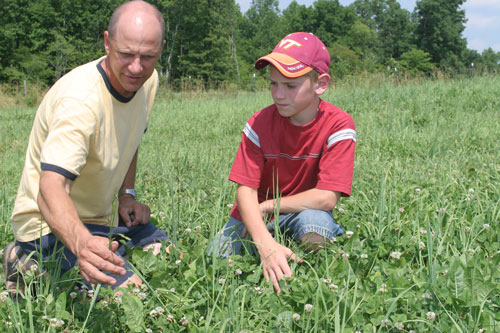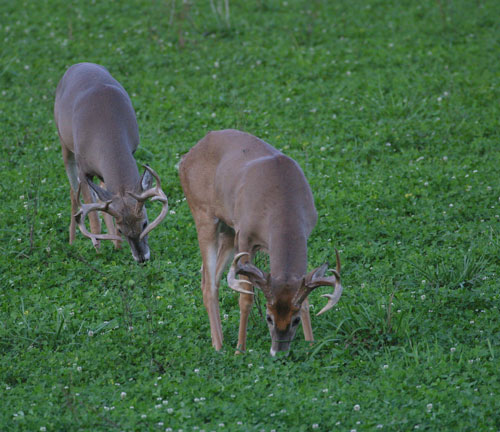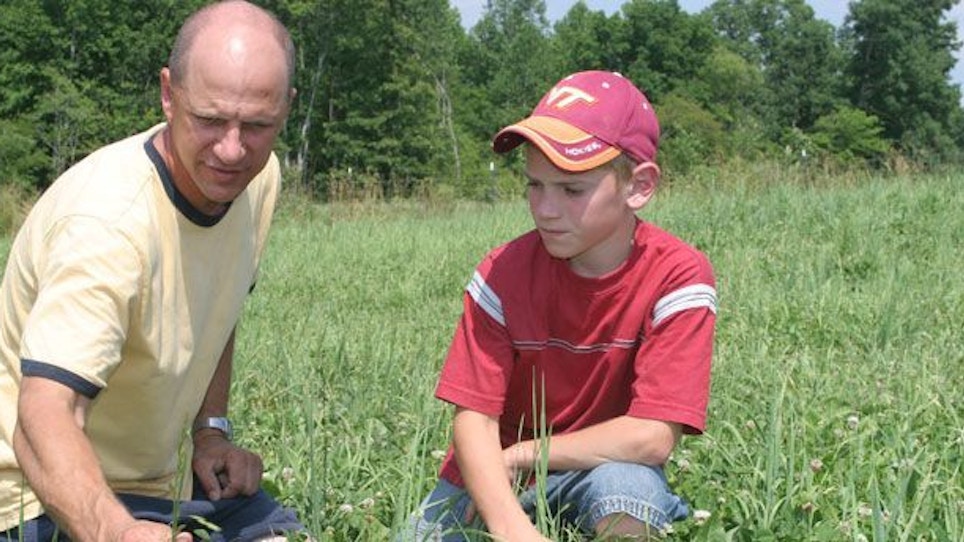 Even if you do plant and grow a lush stand of deer candy, it doesn’t follow that you’ll produce any deer bigger than what you had before you turned into a farmer. Miller didn’t. A growing number of deer biologists are questioning claims that the mere act of giving the deer additional forage in the form of a food plot will grow bigger antlers.
Even if you do plant and grow a lush stand of deer candy, it doesn’t follow that you’ll produce any deer bigger than what you had before you turned into a farmer. Miller didn’t. A growing number of deer biologists are questioning claims that the mere act of giving the deer additional forage in the form of a food plot will grow bigger antlers.
“They can help boost nutrition, which can help increase antler size, but it takes far more than a food plot or two to grow bigger deer,” says Quality Deer Management Association (QDMA)’s New England and Canada Regional Director Matt Ross. “Will a food plot turn your farm into Iowa or Illinois? No. Big bucks don’t come in a bag.”
Food plots certainly can’t hurt, he admits, but in order to produce quality deer, it’s vital to have a total management plan, one that not only includes habitat management, but hunter management as well as deer management. Miller owns 50 acres and a neighbor owns 150. Together, they simply don’t have enough land to institute a sound management plan that protects younger bucks and strikes a good balance between bucks and does. Deer that benefit from his food plots simply wander off and get shot by another hunter who might not care about antler size in particular or herd management in general.
And then there’s another question: Just how hard is it to fill a deer tag or two? In most places, killing a deer, even a decent buck, is getting easier each year. As whitetail numbers continue to rise and more hunters manage their land and deer herd for quality animals, the number of trophy-class bucks is rising. That means putting some venison in your freezer can be as easy as sitting still for a few hours, whether deep in the hardwoods or on the edge of a well-manicured clover field. Deer are grossly overabundant in many states, and hunters who don’t have food plots do just fine.
Why Plots Are Still Golden
All that being said, the benefits of planting and maintaining food plots extends well beyond the obvious reward of producing a great place to hang a tree stand. Whether or not you actually shoot a giant buck over a plot of clover you planted might not matter so much if you enjoy the time spent sowing that plot. In other words, the act of growing a food plot can be just as rewarding as hunting over it.
“If I was doing this just to kill bigger bucks, I would have stopped a long time ago,” says Miller. “I do it because I enjoy it. It’s fun and frustrating all at the same time, but it can be very rewarding to see a good food plot with a deer standing in it.”
And when it comes down to it, food plots do attract and hold deer, especially in areas with low-quality natural forage or when the local mast crop fails. There’s no question that in many regions, especially those with marginal habitat, a food plot can draw deer like ants to a picnic.
 “If deer have an alternative food source that is high in protein and other nutrition, then they will definitely use it if the native forage isn’t as good. Deer know what’s good for them,” says Ross, adding, “A typical hardwood forest can produce about 500 pounds of forage per acre in a good year. A well-maintained food plot can produce up to 3,000 pounds.”
“If deer have an alternative food source that is high in protein and other nutrition, then they will definitely use it if the native forage isn’t as good. Deer know what’s good for them,” says Ross, adding, “A typical hardwood forest can produce about 500 pounds of forage per acre in a good year. A well-maintained food plot can produce up to 3,000 pounds.”
Ross also notes that food plots can make deer more visible, pulling them out of thick cover and into the open, giving hunters a better opportunity to judge individual animals before pulling the trigger. Food plots also benefit a variety of game and non-game species besides deer. Miller has no doubt that the number of turkeys around his southern Virginia home has increased. Although he can’t say that increase is due directly to his food plots, he is certain they use his food plots regularly and he’s had numerous successful hunts in the spring.
“The hens nest and feed around them in the spring and the poults use them to find bugs after they hatch,” he says. “Gobblers hang around them, also, because that’s where the hens often hang out.”
He also sees a variety of other wildlife in and around his plots. Rabbits thrive around clover and a variety of songbirds catch bugs in them, as well. They’ve even been known to provide nesting cover for some songbirds and hawks that feed on the rodents that live in and around a food plot.
The bottom line, then, is this — if you believe a food plot will help you bag more and bigger deer, then by all means, plant all you want. What matters more than anything is that you hunt with as much intensity and confidence as you can possibly muster. Putting a few food plots in the ground certainly won’t hurt your chances, and if nothing else, it will help create better habitat for all wildlife.






